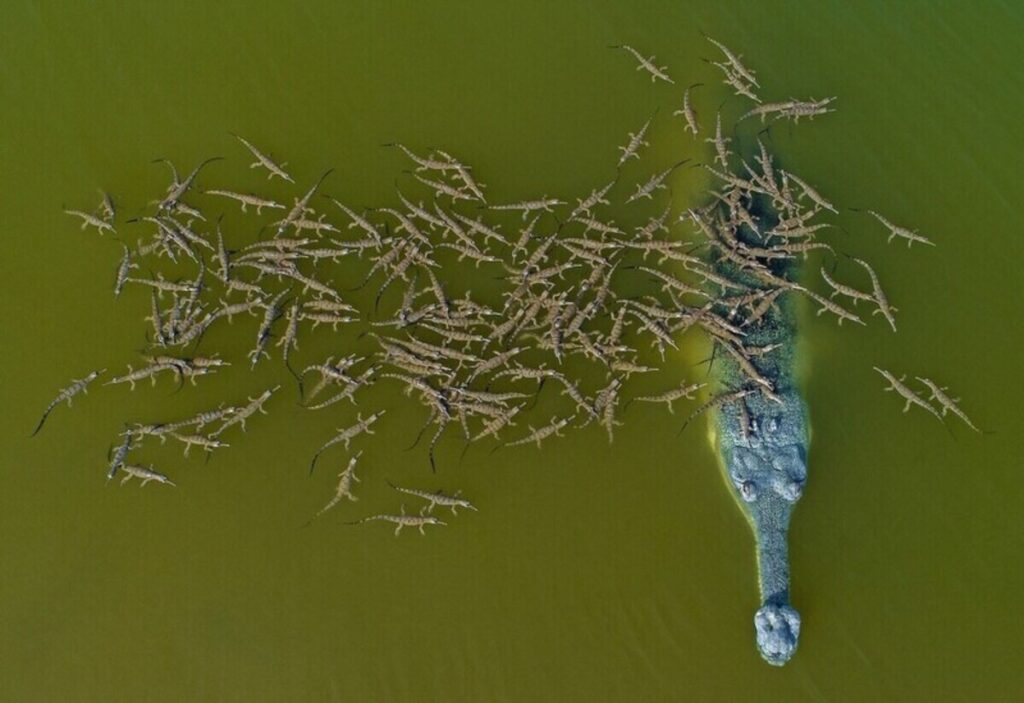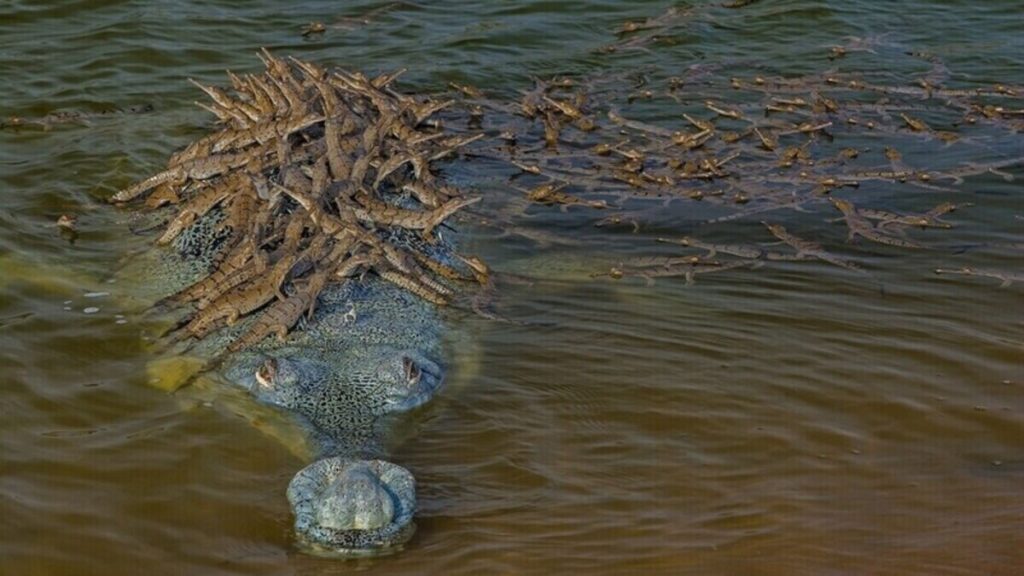In the heart of a wildlife sanctuary, photographer Dhritiman Mukherjee captured a moment that seems straight out of a fantasy book. But rest assured, this enchanting scene is as real as it gets—a gigantic crocodile swimming in a sacred river with not one, not ten, but a hundred baby crocodiles perched on his back. This remarkable photograph not only showcases nature’s wonders but also highlights the critical state of an endangered species.
A Rare Sight in a Sacred River
The Ganges River, a revered and dynamic ecosystem, hosts a variety of species, including the critically endangered gharial crocodile. Mukherjee spent several weeks at the sanctuary, patiently blending into the landscape to get his perfect shot. The result? An incredible image of a male gharial, likely the patriarch to several clutches of young, showcasing an unusual method of childcare.
Gharials, unlike other crocodilian species, have a unique anatomy that influences their behavior. Their long, narrow snouts and razor-sharp teeth make the typical mouth-carrying method of transport impossible. Instead, these gentle giants have adapted to carry their offspring on their backs, ensuring their young can safely navigate the river currents from a secure vantage point.
A Father’s Role in Gharial Society

The sight of a male gharial ferrying around his young might seem unusual, but it’s an essential part of their survival strategy. With only about 650 adult gharials left in the wild, the survival of each juvenile is critical. Patrick Campbell, the senior reptile curator at the Natural History Museum, notes that these creatures, which can grow over four meters long and weigh up to 900 kilograms, face numerous challenges due to habitat degradation.
In the Chambal River, which holds the largest population of gharials, around 500 individuals are fighting for survival, making every successful breeding season a beacon of hope for conservationists.
Capturing the Heart of the River

Mukherjee’s photograph does more than document a rare wildlife moment; it resonates with the power of life and familial bonds in the animal kingdom. His patience and respect for the natural world are evident in how he managed to maintain a safe distance, using his lens to bring us closer to these majestic animals. This striking image has not only been shortlisted for the Wildlife Photographer of the Year but has also won a competition organized by the Natural History Museum, standing out among the top 100 entries.
As someone who has spent years weaving stories from the threads of the web, the story behind this image strikes a particular chord with me. It reminds us all of the delicate balance of nature and the remarkable ways in which animals adapt to their environments. In Austin, where community and conservation go hand in hand, such stories of survival and adaptation resonate deeply, reminding us of our own roles in protecting our planet’s future.
Mukherjee’s photo is a testament to the resilience of nature and the enduring spirit of fatherhood in the wild. It invites us to pause and appreciate the complexities of life that often go unnoticed. In a world bustling with activity, it’s these moments of natural peace and remarkable survival that captivate and inspire us the most.






